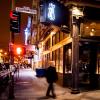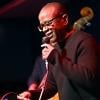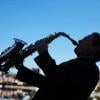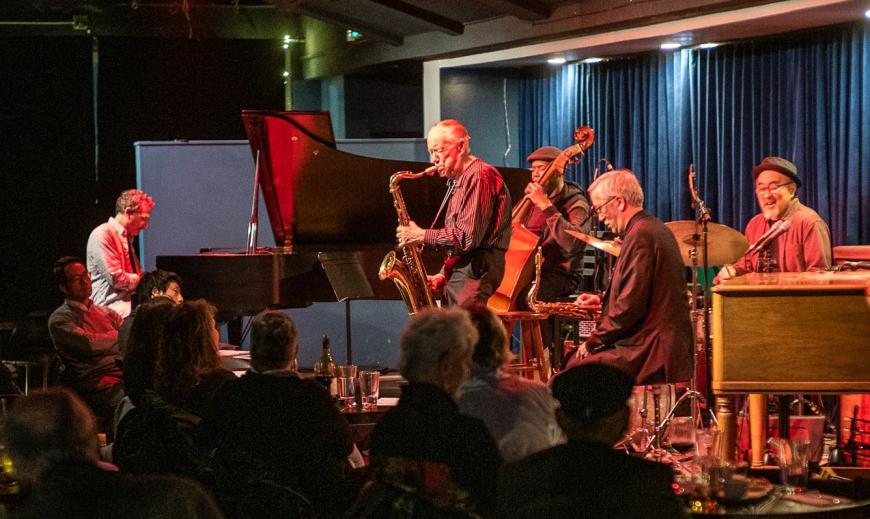
The website for Simon Rowe’s Keys Jazz Bistro, now in its fifth month of operation, welcomes you to “a sacred space in San Francisco for the art and culture of jazz music.”
It feels that way to Jessica Levant, a longtime local visual artist and a fan and photographer of jazz. “It’s like you’re going to church,” she testifies. “I think Simon did an amazing job of design and furnishings, and I think he did it out of reverence for the music.”
Levant recounts her latest visit to the club earlier this month to hear and see pianist Keith Saunders’s quartet, featuring Patrick Wolff, Eric Markowitz, and Smith Dobson. “You come in off a crazy street [Broadway, in North Beach], and it’s a welcoming big space with a bar and a smiling bartender. I chitchatted with Eric [general manager Eric Vance, Rowe’s son-in-law] and got a glass of wine and hung out till the first set ended and the musicians came out.
“Then I went into the listening room, and wherever you sit, you’re not very far from the stage. You can get a really good look at the faces of the musicians, and you can hear them talk to each other. It feels like an intimate club, but it’s not little. [Keys’ seating capacity is 90 in the listening room, 80 in the bar.] You’re not sitting in a row of audience chairs with your hands in your lap, watching a stage ‘down there.’” Levant used to usher at SFJAZZ’s Miner Auditorium, which can seat 700, but hasn’t returned recently. “I don’t like to ‘watch’ music. I like feeling like I’m part of it,” she explains.
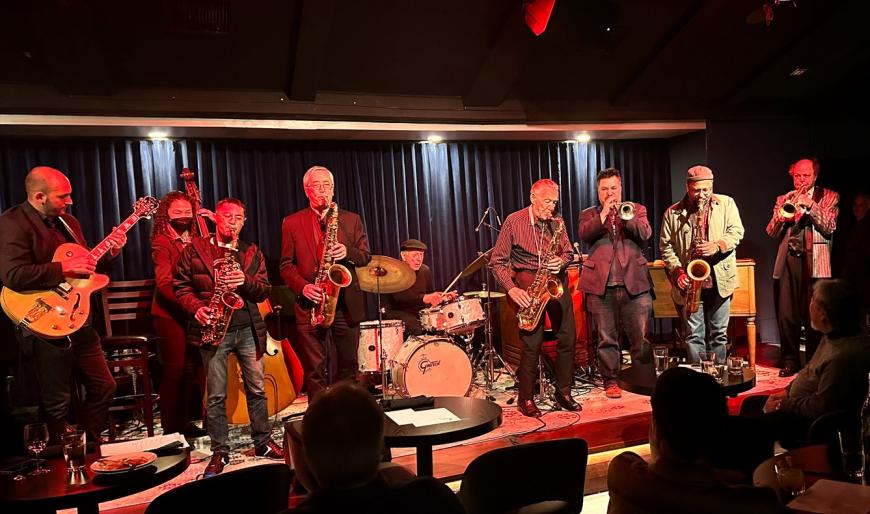
Levant notes that the nightclub ambiance of Keys allows for a variety of attire. “Because of the lighting and the feel, you could go there dressed to the nines because it could be a place for a date night. But for Keith Saunders’s second set, there were kids from the San Francisco Conservatory of Music who were students of Keith’s and Patrick’s, dressed in sneakers and jeans. And nobody was out of place.”
Levant, like many fans and musicians, experiences owner Rowe as the venue’s perfect host. “He’s the master of ceremonies, and he doesn’t need a script,” she says. “It’s as if you’re coming to his house concert.”
Saxophonist Noel Jewkes was among the throng of musicians performing for Keys’ joyous Nov. 10, 2022 opening. They were harbingers of the club’s mission of prioritizing local talent over celebrities from far away. Jewkes returned for a four-day celebration of the late saxophonist Andrew Speight in January and for two Wednesday-through-Saturday billings with his quartet and vocalist Kay Kostopoulos in January and February. “It’s kind of deja vu,” says the 82-year-old Jewkes, who as an aspiring musician in the 1960s “found out that most of the jazz activity was in North Beach, as well as the Fillmore District.”
One of Jewkes’s hangouts in that era was El Matador, at the current site of Keys’ bar. Founded by author, artist, and retired bullfighter Barnaby Conrad, El Matador had been a home base for pianist and North Beach resident Vince Guaraldi and a destination for such visitors as Marilyn Monroe, Frank Sinatra, and Truman Capote.
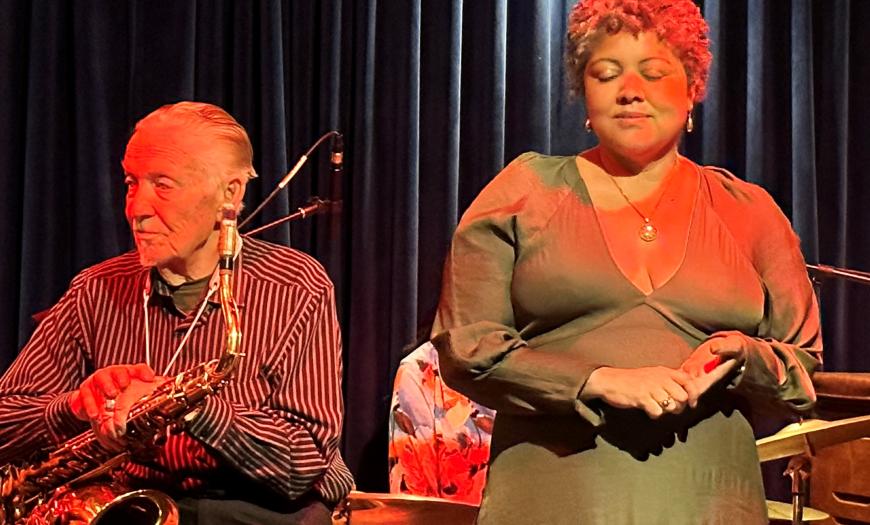
On the other side of Broadway, the young Jewkes frequented the Jazz Workshop, where Orrin Keepnews had produced groundbreaking live recordings during weeklong bookings of Barry Harris and Cannonball Adderley. Jazz also thrived nearby at Enrico’s, Sugar Hill, the Jazz Cellar, and Basin Street West. At the Off Broadway and the hungry i, jazz shared billings with standup comedians Lenny Bruce and Mort Sahl. At the onset of his career, Jewkes found some work providing background music in the neighborhood’s strip clubs.
The veteran saxophonist is happy to be back in North Beach, “but Keys is a big improvement on the old,” he points out. “The sound system is much better. And I don’t think I’ve ever met a more gracious host than Simon. He’s a musician himself, so he knows our idiosyncrasies.” Four-night bookings with two sets a night, though shorter than in the Jazz Workshop’s heyday, have long been a rarity in these parts, particularly for local performers. “It makes us more aware of improving, getting the band tighter,” says Jewkes. “And it gives us a motivation to vary up our programs and concentrate on what’s going to work.”
Rowe’s arrival at 498 Broadway culminated an 18-month search guided by Stu Gerry, a realtor and former maitre d’ at Bix, a North Beach supper club. “I was accosted by all the El Matador ghosts as soon as I walked in” says Rowe, “though I was a little bit daunted by the amount of disrepair, and I knew it was going to be expensive to get it where I wanted it to be.” Several decades ago, the former jazz club had been conjoined with the next-door space (now Keys’ listening room), which had housed Vanessi’s Italian restaurant, but the entire property had long lain fallow.
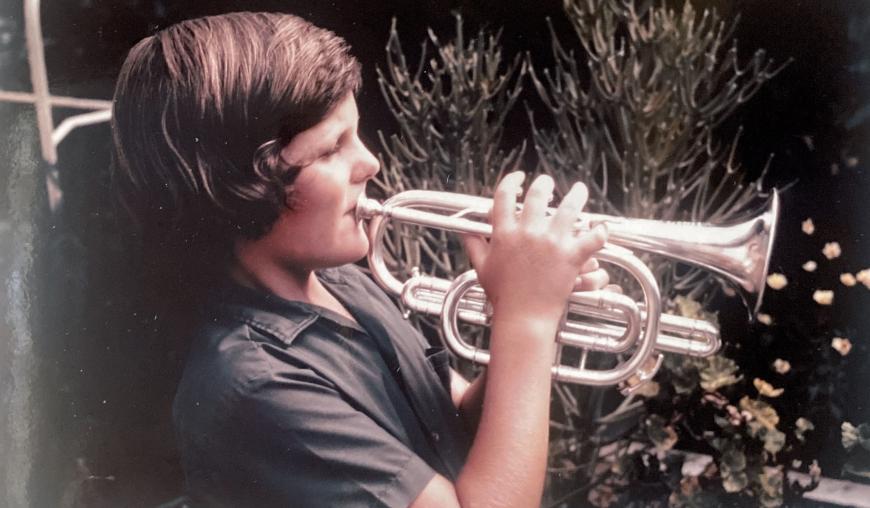
Rowe’s model for what a venue could be dated back to The Basement, a “high-level, community-focused” jazz club in his native Sydney, Australia, operated by Horst Liepolt, who later migrated to New York City to open a pair of jazz clubs, Sweet Basil and Lush Life. “Horst had a special talent for creating spaces that were extremely friendly to musicians but also very inclusive of clientele,” notes Rowe.
Rowe, now 60, was raised by a geneticist father and classical pianist mother, both fans of American music. In high school, he acquired “a strong classical orientation” on trumpet from his Sydney Symphony Orchestra teacher. His father’s temporary posting to the Baylor College of Medicine introduced young Simon to the High School for the Performing and Visual Arts (HSPVA) in Houston, Texas. After the family’s return to Sydney, and at the invitation of Robert Morgan, HSPVA’s director of jazz studies, Rowe decided to finish his schooling in Houston and relocated there on his own at age 16.
Rowe graduated to a prestigious program at Northwestern University with Vincent Cichowicz, longtime trumpeter with the Chicago Symphony. Dissatisfied with the jazz program there, he returned to Sydney to enroll in the Conservatorium of Music, where the younger Andrew Speight, who gigged with Rowe, would later enroll. While completing his Conservatorium studies, Rowe applied to study with trumpeter Bill Adam in Indiana and began dating Kylie Jane, a student of physical therapy. “Kylie said, ‘I’ll come with you to the States, but you have to marry me,’” Rowe chuckles. “And she’s been with me ever since, on all the crazy adventures that this music instigates.”
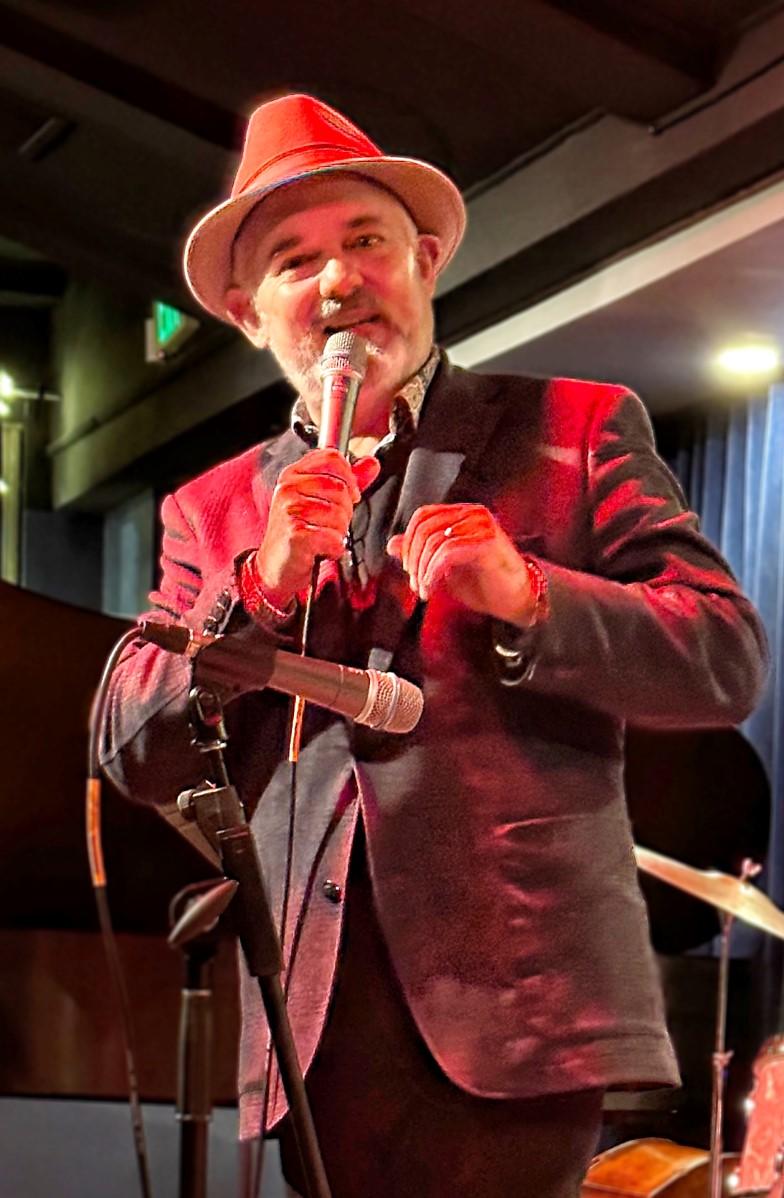
The pair spent several decades in the Midwest, while Rowe pursued academic credentialing and “created little hubs of interest” in jazz in a handful of cities. He embarked on “a serious pursuit of piano” with Henry Butler, which led to four years on keyboards in saxophonist Willie Akins’s quartet. His master’s degree got him teaching jobs at Eastern Illinois University and at Minnesota State University Moorhead, and he studied classical composition and completed a doctorate at the University of Illinois Urbana-Champaign. While living in Fargo, just across the state line, Rowe created a successful tri-college jazz program. As an active moonlighting performer, he curated a pair of “listening spaces,” one of them equipped with a Hammond B-3 organ, on which Rowe quickly developed interest and skill.
After seven years in Fargo, with three growing daughters to help support and a proven record as an academic, performing musician, and organizer, Rowe interviewed with pianist Dave Brubeck and wife Iola and secured directorship of the Brubeck Institute at the University of the Pacific in Stockton, California, in 2011. Kylie Rowe joined the physical therapy faculty there. “I loved all the different hats I had to wear, and we had some huge victories,” says Rowe about his time at UOP. “But it’s sad to think that the university, because of the shortsightedness of the president, wasn’t going to be able to sustain the Institute.”
Seeking support for his mission, Rowe reached out to David Stull, president of the San Francisco Conservatory of Music. “But David didn’t want the Institute. He wanted me to start his Roots, Jazz, and American Music program at the conservatory.” Rowe became RJAM’s founding director in 2017. “My whole concept was to have a very high-quality faculty, which would rotate a very playing-intensive curriculum.” But as at the Brubeck Institute, Rowe realized the RJAM program was “under-sourced,” with a need “to establish a robust endowment in order to subsidize the experience for talented young people who might apply. The president and I had different visions of what needed to happen.” Rowe departed SFCM early in 2020.
During the pandemic, Rowe established “Jazz on the Patio” sessions outside the rear entrance to his wife’s Living Healthy Physical Therapy studio in Glen Park. The gigs were anchored by his organ trio, with Dave MacNab on guitar, Brian Fishler on drums, and Rowe on the Hammond. An occasional guest was fellow Sydneysider Andrew Speight, with whom Rowe had reunited.
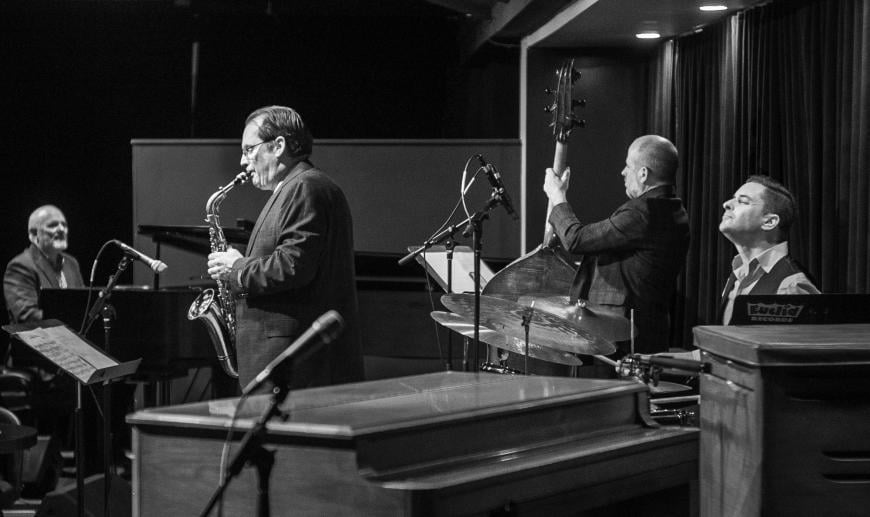
“After the Brubeck Institute and the conservatory, I could easily have landed a nice college position anywhere,” Rowe reflects. “But every time I applied for one, I always felt a little sick to my stomach.” He’d enjoyed his decades in education but had become inspired by “the very rich history of great players in the Bay Area, and I felt that has not been as well supported as it could have been in the last 20 years.” This motivated his finding and running his own space. Rowe relates how a Facebook interchange with Robert Morgan, his former high school mentor in Houston, made that dream feasible.
“Bob, in his dutiful way, posted a lot of alumni stuff, and I noticed Matt Mullenweg, who’d been a jazz saxophone student at HSPVA. He’d also been dabbling in website creation, helping people out, and Bob helped orient Matt in various extramusical ways. Fast-forward, and Matt creates WordPress, which over half the world’s websites are using, and he has several other companies. I said to Bob, ‘Since Matt is San Francisco-based, do you think he’d be interested in my vision and my venture?’ So Bob connected us, and Matt and I had a one-hour cup of coffee, and he said, ‘I’m in!’ To ‘house’ the club, Kylie and I created Hip Joint LLC (a nice play on her work and mine), and Matt, with his funds, became a contributing owner of the LLC.
“Even though Matt has been wonderfully generous, Kylie and I have had to dig deep into any and all of our resources,” Rowe continues. “We’re not yet at a point of ‘flourish’ by any means. At the moment, a good week for us is when we get 200 to 250 advanced tickets sold [on the website]. We know that this will translate to good food and beverage sales, and that that’ll be in the pocket of where we need to be.”
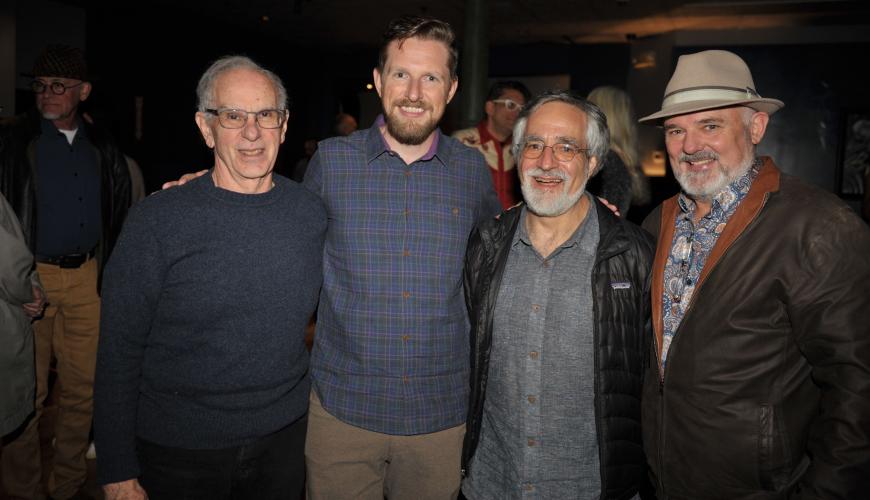
About the menus, Rowe points out that general manager Eric Vance “was very reticent to do anything that puts food in the spotlight too much because we have to lead with the music. We have Aussie ceviche among the appetizers, potato with fish roe, and Southern-style fish and grits — though the fish we’re using is barramundi, which is very popular in Australia. For our cocktails, we’re doing real classics you might have gotten at El Matador, the French 75s, the whiskey sours, but also my mother’s favorite, which is the brandy crusta.”
Rowe insists that “we’re very conscious of price points because I don’t want you to have to think too hard about coming down to Keys. The tickets are only $25 [for the 7 and 9 p.m. shows], and we’ve made students free for the late show” at 11 p.m. on Saturday, featuring Rowe or another organist fronting a trio at the resident Hammond B-3. For the weekly bookings, Rowe’s “first commitment is to world-class Bay Area players who work and live here. My second is to people who might be bicoastal. And my third is to people who sometimes come through here on tours and have made this part of their stomping ground. It will take me a long time to run out of people who have a legitimate tie to the Bay Area.”
Noel Jewkes and vocalists Clairdee and Kenny Washington have all enjoyed repeated engagements at Keys. This week showcases the trio format rather than one single act, with groups led by vocalist Masha Campagne, pianist Joe Warner (for two nights), and organist Wil Blades. March 29 is the first of four nights for vocalist Nicolas Bearde. April’s artists include Charged Particles, Kim Nalley, Craig Handy, and Brian Andres. There’ll be a May date for Mary Stallings, whom Rowe reports as “so excited about the prospect of a real club in North Beach,” where she sang at El Matador six decades ago.
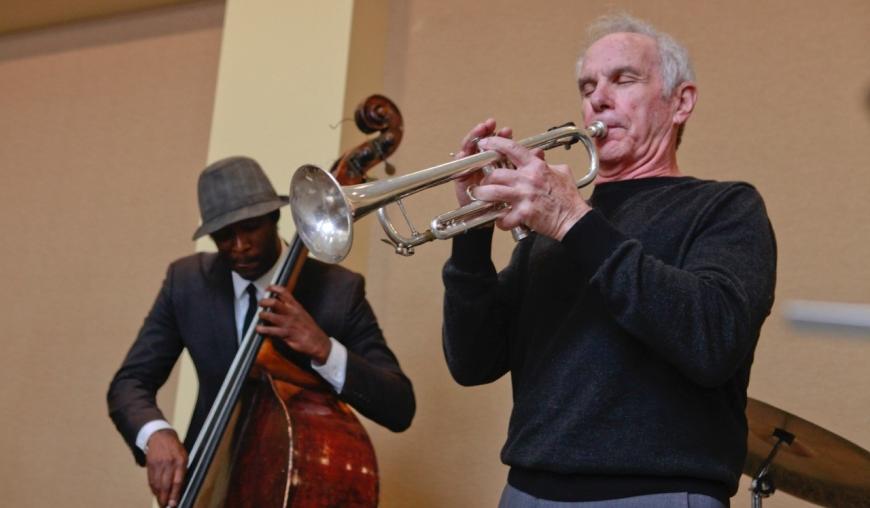
The 498 Broadway address is also functioning as a home for Jazz in the Neighborhood, which just last week was granted nonprofit status to continue subsidizing musicians’ wages, encourage emerging artists, and document jazz history. Mario Guarneri, JITN’s founder, recognized a kinship between his and Rowe’s missions when both were employed at SFCM, where Guarneri still teaches trumpet and coaches ensembles in the RJAM program. “Simon has given us a space in his greenroom, which is what we need when we’re applying for grants,” says Guarneri. “And we use the club for meetings.” JITN, which has contributed somewhere between $500,000 and $600,000 to jazz musicians’ coffers over 10 years, supplements the Saturday late-night sessions and one other show at Keys.
The club also functions as a meeting and informal jam site for Guarneri’s Independent Musicians Alliance, an advocacy group with 130 members. The IMA is planning a fundraising gig there on the afternoon of April 30. “Bless Simon’s heart, it takes a lot of courage to do what he’s doing,” says Guarneri. “It’s a center of the community now, and we’re doing what we can to support it.”
Rowe hopes that the community will extend beyond jazz, “with our front bar emerging as a watering hole as tourist season takes hold. There’s even a little DJ booth there where we might spin some vinyl.” The bar opens for happy hour at 5:30 p.m., with its own menu of snacks and desserts, and the listening room opens at 6 for seating and dining, an hour before the show. “After a while,” Rowe hopes, “people won’t say, ‘Who’s at Keys?’ They’ll just say, ‘We’re going to Keys.’”


